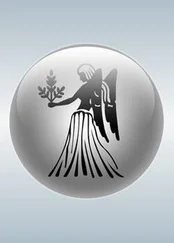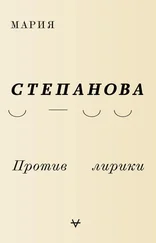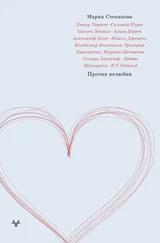To my confusion, my mother answered momentarily and enigmatically. It was just as if she had held this answer in her head for a long time, waiting for someone to ask the question. I was puzzled by her answer — and I have always remembered it. She said: “I’m afraid of the violence that can destroy a person.”
Years passed, decades. Now I am the one who fears this same violence that can destroy a person. In me this fear has a sheen on it, as if my feelings of fear, anger, and resistance predate me and have been polished to a gleam by the many preceding generations. It is like entering an unknown room as if you had lived there all your life (and the demons I share the space with find it swept and garnished , as in the Gospels), in this room an undated film is being shown. When I awake I realize that the Germans have entered Paris and I need to hide the children; that the fearsome woman who sweeps the snow in the yard will interrogate me about my right to live there, that Mandelstam has been arrested and is entering a stadium through iron doors that resemble the doors to an oven. I was eight when I was told about Mandelstam and seven when I was told: we are Jews . But the black hole of the unspoken that lay at the center of the tale (perhaps because they themselves didn’t know) was more ancient than any explanation or example.
Every example, every photograph and book among the dozens I have read only confirms what I remember too well, with my gut memory. Perhaps this ancient horror began in 1938 when my still-young grandfather Nikolai gave up his service pistol and sat waiting to be arrested. Or perhaps later, in 1953, with the Jewish Doctors’ Plot, when Great-Grandmother and Grandmother, both doctors, both Jews, came home in the evenings and sat silently under the hanging lamp at the table in their communal apartment, waiting to be taken away. Perhaps in 1919, when my overly successful great-great-grandfather Isaak, “the owner of factories, property, steamships,” disappeared. We don’t know how or when he died, but we can well imagine what was going on back then in postrevolutionary Ukraine. Perhaps, and probably even earlier, in 1902, 1909, or 1912 when pogroms were taking place in Odessa and all across the south of Ukraine and the bodies lay on the streets. My relatives were there (a person is always there , in close proximity to the death of others and one’s own death), and it turns out I didn’t need to hear any of this from them. The knowledge has lived within me.
Many years later I visited the Holocaust Memorial Museum in Washington in search of help and I am still thankful to the advisor who spoke to me there. We sat at a long wooden table in the library, which appeared to hold every book written on any matter that might be considered Jewish. I asked questions and got answers. Then the museum advisor, a historian, asked me what I was writing about and I began to explain. “Ah,” he said. “One of those books where the author travels around the world in search of his or her roots — there are plenty of those now.”
“Yes,” I answered. “And now there will be one more.”
She saw all her knickknacks fly straight to heaven, tray cloths and photo frames and tea cozies and grandma’s silver cream jug, and the sentences in silver and silk, every single thing!
— Tove Jansson
At this point I must speak of my ancestry.
— Viktor Shklovsky
1. You Can’t Escape Your Fate
“…And all this time,” said my mother, in her séance-like storytelling voice, “all this time Misha was waiting for her in Russia, Misha, who was to be her future husband and your future great-grandfather. And when the First World War broke out, she returned to him after all her wanderings and they met at last, and after that they were always together. At their wedding he gave her a little brooch, the one I always wear for special occasions. On one side it has her initials, SGF, for Sarra Ginzburg-Fridman, and on the other, the words you can’t escape your fate .”
This you can’t escape your fate was inscribed on a round gold disc, like a dog tag, which was fastened to the front panel of the dark-blue “best” dress, and for a long time I thought it was awful (because fate chased and chased and finally caught up with them — Misha, who was irresistible and fun, with his high boots and long, long legs, only lived another seven years after the wedding). The “best” dress was always the same, made of a brushed cotton gathered at the bust, and hugging the waist. It was a comforting uniform that only came out on special occasions. In my early childhood my mother had more dresses for going out, and one of them, a brown dress with a white pattern on it, gave me a silent thrill. By the 1980s, when my parents had reached the age I am now, it was the unchanging nature of any special occasion that gave it its appeal. The blue dress came out of the cupboard; the brooch was fastened in its place; the white box of perfume was taken out of the little wooden medicine cabinet, always the same uncomplicated scent, or perhaps the bottle simply never ran out. The perfume was called Signatyur , and it was from Poland; the round crystal bottle with its gold-flecked contents lived in a silken nest on a cardboard pedestal, its cold little scented beak touched my mother and me behind the ears, on the chest, and at the nape of the neck. A few minutes before guests arrived I always took a quick peek at the back of the golden brooch with its blue stone to check the inscription was still there.
“And all this time,” my mother repeated, just to make sure there was no doubt at all who the heroine of the story was, “she was in France.” Your great-grandmother studied at the Sorbonne (this, I surmised, was a sort of medical institution, the most important and famous, that much was clear without any explanation) and she returned to Russia as a qualified doctor. The milk-white certificate from the Sorbonne, with its inked calligraphic tails, its concave little letters, and its seal the size of a barn-door key, was another piece of proof of the seriousness of the deed and the righteousness of the victory. But none of this was important. The mesmeric heart of the story was that great-grandmother spent a biblical seven years in Paris, the length of time Jacob worked for his Rachel — and she returned from there, returned to the future “us,” as if from under the ground, as if her wonderful life over there had meant nothing to her. Working my way through the shelves of French books from the Musketeers to Maupassant, I couldn’t come to terms with how carelessly she had thrown over Paris’s dizzying possibilities (or impossibilities for my mother and me).
I was five when she died, aged ninety, having outlived her beloved daughter by two years. Those two years she spent patiently searching for her daughter in her two rooms in a communal apartment, looking in the cupboard, then the sideboard: “Lyolya?” Gradually she began calling her granddaughter by her daughter’s name, as if the various nesting dolls in the family matryoshka could be moved around without changing the sense of order. She would sit on the divan at the dacha in a stripy housecoat: a tiny little woman, shrunken to a husk. In the jasmine-white light she looked almost transparent, but her gaze had a spiky, insect-like tenacity, you could see that whatever was coming for her would have a tough job of swallowing her down. Oh, she’s a rock , Lyolya had said, forty years before, and even now, in her minute and weightless state, she was a monument to her own past strength.
“Surely we won’t turn into old people like them. The very thought horrifies me. I’ll never allow it! It must be that in old age we think differently and want different things — otherwise life would be unbearable.” In February 1914 something made her send her future husband a few postcards with pencil sketches of old women, together with this note, and a few weeks later she wrote to ask him if the old women had arrived. She still had her university exams ahead of her — and then two wars, the birth of a child, revolution, evacuation, her daughter’s and granddaughter’s illnesses. Then the Jewish Doctors’ Plot, which didn’t quite reach our family, and the milky skin of poststroke life, simply termed “senility” back then. The deft precision of her youth didn’t leave her, but it seemed to stand out more sharply, like her ribs, her mandibles, her wing cases, or the heavy line of brow over the little, almost childlike face.
Читать дальше











